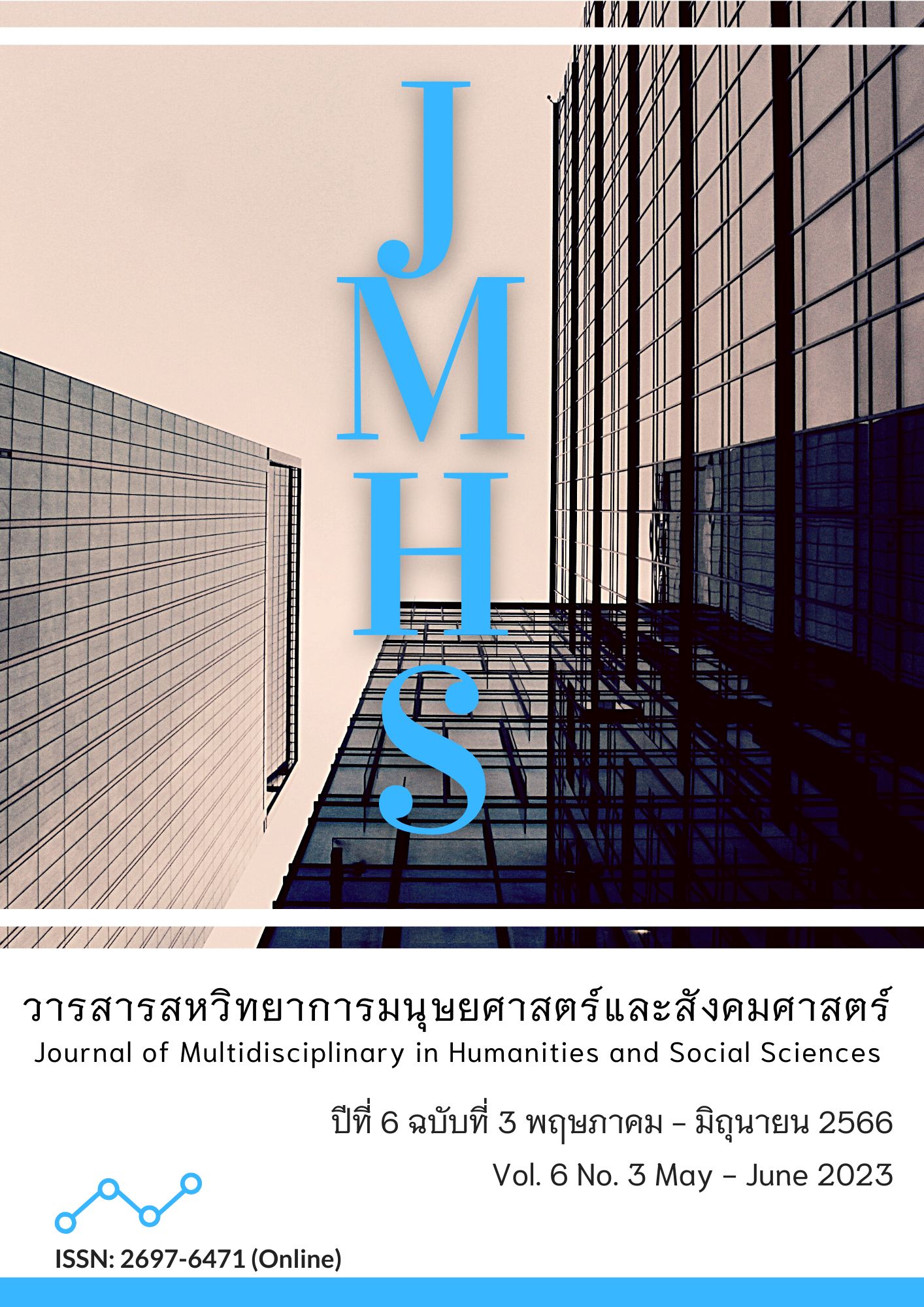Digital Technologies Usage Provide and Promote Learning for Teachers of Non-Formal and Informal Education Centre
Main Article Content
Abstract
The objectives of this article were: 1) to study the current situation and reasons for digital technology usage to provide and promote learning for non-formal and informal education teachers; and 2) to design the use of technology to provide and promote learning for non-formal and informal education teachers. The research method was descriptive research, divided into two phases. Phase 1 surveyed teachers. The research tool was a questionnaire collected by surveying 386 teachers through multi-stage random sampling. Data were analyzed by finding frequency, percentage, mean, standard deviation, and open-ended questions using analytic induction. Phase 2 interviewed teachers, learners, and experts. The research tools were interview forms. Data were analyzed by analytic induction and a summary of the pattern of using digital technology to provide and promote learning for NFE teachers.
The results showed that the current situation of using digital technology to provide and promote learning for NFE teachers is divided into 5 aspects: 1) learning planning and preparation; 2) providing learning activities; and 3) learning evaluation 4) monitoring, communication, public relations, and 5) using digital platforms of the NFE Office in all aspects, digital technology is used at a high level. The study of reasons for digital technology usage is divided into 2 aspects: 1) attitude toward use and 2) readiness and facilities. Both sides were at a high level. The results of creating a pattern for digital technology usage to provide and promote learning for teachers can be divided into the patterns for those who are digitally ready, namely the Learning Management System (LMS) of The Office of Non-formal and Informal Education. And the patterns for those who are digitally lacked the printed media should be prepared in the form of a guidebook presenting digital technology and having a QR code for connecting to digital media. including assignments that promote digital skills for learners.
Article Details

This work is licensed under a Creative Commons Attribution-NonCommercial-NoDerivatives 4.0 International License.
Views and opinions appearing in the Journal it is the responsibility of the author of the article, and does not constitute the view and responsibility of the editorial team.
References
คณะกรรมาธิการสังคม กิจการเด็ก เยาวชน สตรี ผู้สูงอายุ คนพิการและผู้ด้อยโอกาส, สภานิติบัญญัติแห่งชาติ. (2558). สรุปผลการสัมมนา “ดิจิทัลเพื่อเศรษฐกิจและสังคม: สังคมได้อะไร”. สืบค้นเมื่อ 15 พฤษภาคม 2563, จาก https://www.senate.go.th/assets/portals/18/fileups/201/files/เอกสารวิชาการ%206%20(ดิจิทัลเพื่อเศรษฐกิจและสังคม).pdf.
ดิษฏาพันธ์ บุตรกุล และ ศิริณา จิตต์จรัส. (2562). การส่งเสริมความพร้อมการดำเนินงานของศูนย์ดิจิทัลชุมชนเพื่อการเรียนรู้ตลอดชีวิต. วารสารศิลปกรศึกษาศาสตร์วิจัย, 11(1), 241-255.
นวรัตน์วดี ชินอัครวัฒน์, สุวัฒน์ จุลสุวรรณ์, นันทกานต์ วุฒิศิลป์, และ สุรางคนา มัณยานนท์. (2565). การประเมินความต้องการจำเป็นในการพัฒนาสมรรถนะด้านการใช้ดิจิทัลของครูในโรงเรียนมัธยมศึกษา สังกัดสำนักงานคณะกรรมการการศึกษาขั้นพื้นฐาน. วารสาร มจร อุบลปริทรรศน์, 7(2), 1803-1814.
มติชนออนไลน์. (2560). กศน. ลุยปั้นวิทยากรแกนนำเทคโนโลยีดิจิทัลยุคไทยแลนด์ 4.0. สืบค้นเมื่อ 20 มิถุนายน 2563, จาก https://www.matichon.co.th/education/news_762927.
รัตนา ดวงแก้ว, กุลชลี จงเจริญ และ ชูชาติ พ่วงสมจิตร์. (2560). การวิจัยติดตามผลการดำเนินงานของการศึกษานอกระบบและการศึกษาตามอัธยาศัยตามมาตรฐานการศึกษาของชาติ. Veridian E-Journal, Silpakorn University, 10(1), 90-110.
วรรัตน์ ปทุมเจริญวัฒนา. (2561). แนวทางการจัดการศึกษาเพื่อส่งเสริมการรู้สารสนเทศของนักศึกษาการศึกษานอกระบบในกรุงเทพมหานคร (รายงานการวิจัยฉบับสมบูรณ์). กรุงเทพฯ: จุฬาลงกรณ์มหาวิทยาลัย.
สำนักงานเลขาธิการสภาการศึกษา. (2562). รายงานการศึกษ แนวปฏิบัติของการสร้างและส่งเสริมการรู้ดิจิทัลสำหรับครู. กรุงเทพฯ: พริกหวานกราฟฟิค.
อนันต์ วรธิติพงศ์, ปณิตา วรรณพิรุณ และ ปรัชญนันท์ นิลสุข. (2561). การศึกษารูปแบบดิจิทัลเทคโนโลยีเพื่อการศึกษาสำหรับการศึกษาขั้นพื้นฐาน. Veridian E-Journal, Silpakorn University, 11(2), 1200-1215.
Constantakis, P. (2016). Integrating Digital Tools for Adult Learners: Four Critical Factors. Retrieved
June 3, 2020, from https://digitalpromise.org/wp-content/uploads/2016/03/dp-integrating_digital_tools.pdf.
OECD. (2019). Digitalisation and productivity: a story of complementarities. Retrieved May 17,
, from https://www.oecd.org/economy/growth/digitalisation-productivity-and-
inclusiveness/.
UNESCO. (2019). Digital technologies for the inclusion of disadvantaged communities and marginalized groups supported by IFAP. Retrieved October 20, 2020, from https://en.unesco.org/ news/digital-technologies-inclusion-disadvantaged-communities-and-marginalized-groups-supported-ifap.
Wikramanayake, G. (2005). Impact of Digital Technology on Education. In Conference: 24th National Information Technology Conference. Retrieved from https://www.researchgate.net/publication/216361364_Impact_of_Digital_ Technology_on_Education.


